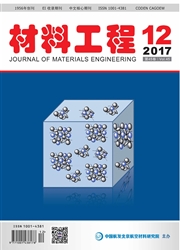

 中文摘要:
中文摘要:
界面的金属间化合的混合物(IMC ) 和降级的生长规则砍 Sn-0.8Ag-0.5Cu-2.0Bi-0.05Ni (SACBN )/Cu 的力量焊接关节与 Sn-3.0Ag-0.5Cu (SAC305 )/Cu 比较被调查焊接在 373, 403,和 438 K 变老的关节。结果显示出那(Cu1x, Ni x ) 在 SACBN 之间的 6Sn5 阶段形式焊接并且 Cu 底层在焊接期间。界面的 IMC 常常变厚,变老的时间增加,并且越高变老的温度, IMC 层种越多 faster。与 SAC305/Cu 夫妇相比, SACBN/Cu 夫妇展览一个更低的层生长系数。为 SACBN/Cu 和 SAC305/Cu 夫妇的 IMC 生长的激活精力分别地是 111.70 和 82.35 kJ/mol。一般来说, shear 力量连续地焊接关节衰落。然而, SACBN/Cu 焊接关节展览一更好砍力量比 SAC305/Cu 焊接关节。
 英文摘要:
英文摘要:
The growth rule of the interfacial intermetallic compound (IMC) and the degradation of shear strength of Sn-0.SAg-0.5Cu-2.0Bi-0.05Ni (SACBN)/Cu solder joints were investigated in comparison with Sn-3.0Ag-0.5Cu (SAC305)/ Cu solder joints aging at 373, 403, and 438 K. The results show that (Cul-x,Nix)6Sn5 phase forms between the SACBN solder and Cu substrate during soldering. The interracial IMC thickens constantly with the aging time increasing, and the higher the aging temperature, the faster the IMC layer grows. Compared with the SAC305/Cu couple, the SACBN/Cu couple exhibits a lower layer growth coefficient. The activation energies of IMC growth for SACBN/Cu and SAC305/Cu couples are 111.70 and 82.35 kJ/mol, respectively. In general, the shear strength of aged solder joints declines continuously. However, SACBN/Cu solder joints exhibit a better shear strength than SAC305/Cu solder joints.
 同期刊论文项目
同期刊论文项目
 同项目期刊论文
同项目期刊论文
 Wetting behavior and interfacial reactions in (Sn-9Zn)-2Cu/Ni joints during soldering and isothermal
Wetting behavior and interfacial reactions in (Sn-9Zn)-2Cu/Ni joints during soldering and isothermal 期刊信息
期刊信息
